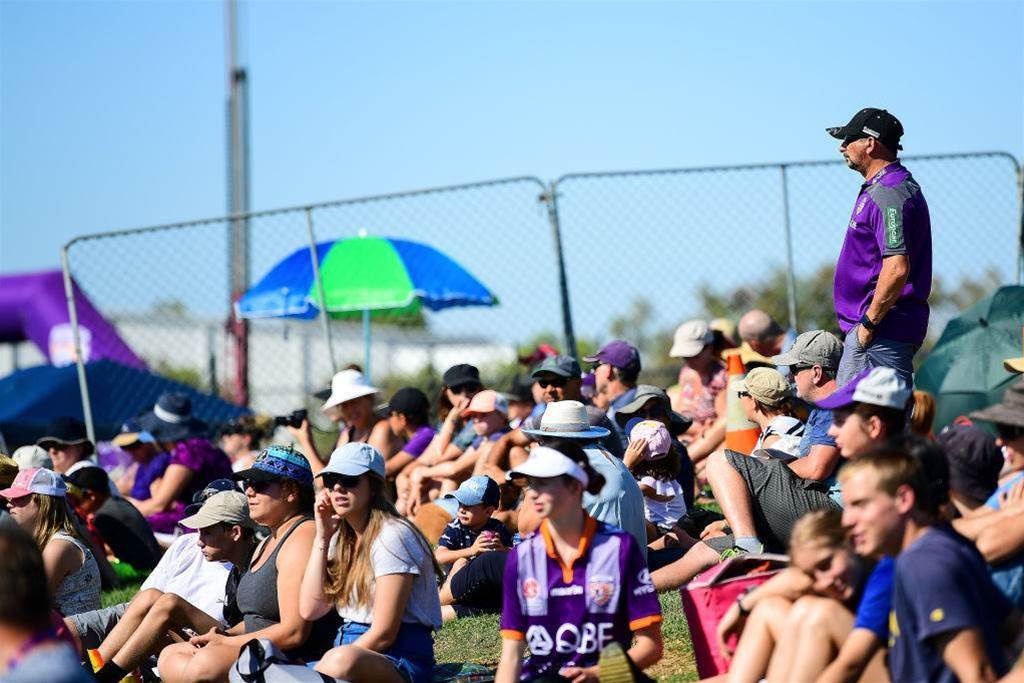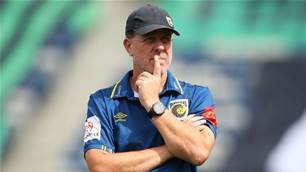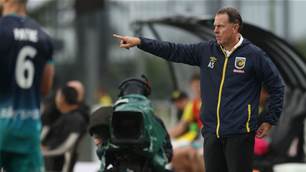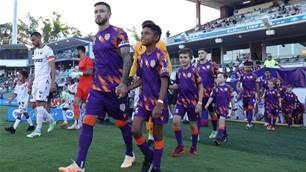With furore over stagnant W-League crowds, poor timeslots and difficult locations, we took a look at why FFA and W-League clubs make the choices they do.
There has been much debate over the accessibility of W-League games in 2019/20. Many have lamented the scheduling and location of games.
Perth Glory owner Tony Sage revealed their commercial arrangements to us for this season, in the hope of explaining why clubs make the choices they do and laid the blame at the feet of the league's "high-end corporates".
But first, it's important to understand the context behind the W-League's timeslots, in order to explain why FFA make their decisions, the way they do.
Scheduling choices are generally made because TV revenue far exceeds gate revenue. FFA hasn't hid the fact that they have to cater for TV audiences because television viewers bring more money in.
Television money provides the majority of income that currently filters down to girls at the grassroots level and women at the elite level.
Last season saw 760,000 fans tune in to the W-League, according to leading research company Roy Morgan.
Thursday night football - which has been contentious among W-League fans - proved a major hit.

This figure means the W-League TV audience was 29% of the cumulative W-League and A-League audience of 2,660,000, an impressive number when we consider there are less W-League games on TV compared to the A-League.
Thursday night prime time exposure is a key reason for this statistic, with TV audiences dropping significantly if games are played at alternative times.
Many have complained that Thursday night games are hard for families to get to considering it is a school night. This is true, while many on the other hand love the fact they can come home after work or school and flick on the TV and enjoy some football.
The purpose behind Thursday night football was not to make the game less accessible, but rather to give the W-League a stand-alone time where it can gain maximum exposure without interference from other competitions.
Looking at the TV metrics from last season, it worked.
At the moment, W-League games played on Friday to Sunday come up against the A-League or female and male competitions such as the (Women's) Big Bash League, Super Netball or (W)NBL.
These other alternatives often eat into the potential W-League fanbase, which was why FFA chose Thursday night stand-alone football. This year, with more games on TV than ever before, this 760,000 number is set to grow.
There is also one game on free to air on Sundays on the ABC.
Many fans believe that ideally, every match would be played on free to air television, but until a free-to-air station comes on board and offers more money than Fox Sports, this won’t happen.
The W-League has already had substantially more free to air coverage throughout its history than the A-League.
The benefit of TV scheduling and subsequent increases in W-League audiences is that there is now more money available for the W-League.
Wages have considerably risen for W-League players. The minimum salary is now 30% higher at $16,344. This is line with the minimum hourly rate of the A-League. This wouldn’t have been possible without TV exposure for the W-League.
Michele Levine from Roy Morgan praised the reputation of the W-League and the Matildas for the impressive TV ratings.

“Roy Morgan’s TV viewership results comparing the W-League side-by-side with the A-League show there is a substantial audience for the women’s league, despite a relative lack of promotion compared to its male counterpart,” she said.
“TV viewership of the W-League of 760,000 is around 40% of the viewership of the A-League at 1.9 million.
“Along with the Matildas’ success, a key driver of this increasing interest in Women’s Sport, and Women’s Football in particular, is the very positive and trustworthy image Australians have of it.”
Given the increasing metrics, prime time Thursday night football can showcase these fine role models to a greater audience.
Apart from Thursday nights, some of the other timing has come in for criticism too. Friday games at 5pm as part of a double header were one such issue.
If double-headers are to take place, there is often little other option left for FFA and Fox Sports, as it's seen as less ideal for a W-League game to start at 9.30pm.
Meanwhile, if they swap the A-League game to 5pm, the W-League would get a bigger crowd, but the A-League crowd would drop significantly more than the W-League would increase.
This means FFA would lose more money overall for the game, which makes it harder to subsequently fund the W-League. The W-League is partly funded by monies generated by the A-League.
There have also been stand-alone games at 7-7.30pm on Friday nights this year, which is prime time football.
Adelaide against reigning champions Sydney FC in Round Two drew 784 fans and Perth against Canberra in Round Five only drew 365 people.
Last season, a stand-alone Friday night prime time Melbourne Derby at the boutique and easily accessible AAMI Park, between then reigning champions Melbourne City and powerhouse Victory, only drew 1,619 people.
These are only small samples, but it goes to show that playing W-League games at optimal times doesn’t always work.
Now if we look at the Sunday times...

This year, games have ranged from 4pm to 6pm kickoff times. Sunday afternoon at this time are not necessarily bad times.
Families are seen to have done their chores or hobbies for the weekend and can go along and enjoy some football to round out the weekend.
But this hasn’t appeared to work either. With the Sunday afternoon stand-alone games averaging around 1,500 this year.
What about Saturday nights? Young families can go out as well as young adults. Kids won’t get home too late and the young adults can go out after.
However again, it seems this time isn’t ideal for the bulk of fans, with crowds not any better than the other time slots mentioned.
Many argue the times need to tie in with a decent location for the games. A stadium that is accessible by public transport and has decent facilities.
So why are W-League games played at suburban locations rather than at central points?
It comes down to cost. Average W-League crowds are 1,540 this year. If clubs wear the cost and take the hit now for a bigger return in the future, it could become a fast track way to go broke.
Most clubs have kept their commercial arrangements quiet. But here is the deal for Perth Glory.
- To play at HBF Park, it costs $100,000 for three hours.
- To play at 4,000 capacity Dorrien Gardens it costs $5,000 for three hours.
- The average crowds for Perth’s A-League team is 9,302. For the W-League team, it is 531.
If they play the W League-team at HBF Park and can't massive increase those attendance numbers quickly, this could spell the end of the Perth Glory W-League team.

Dorrien Gardens is also only a seven-minute drive from the centre of Perth too and is easily accessible by public transport.
Perth Glory owner Tony Sage was adamant that government’s and private sponsors must come on board.
“PGFC and I have been a huge supporters of the W-League and the results prove that, having been in three grand finals in five years,” said Sage.
“We are very lucky here in the west having BHP and our state government through Live Lighter sponsor our women's team.”
Perth isn't alone. Western Sydney Wanderers play some games at Marconi Stadium rather than BankWest as it’s cheaper and more intimate with the intention of making the atmosphere better.
It’s also cheaper and better for Melbourne City and Victory to hire out suburban grounds such as Epping Stadium and ABD Stadium rather than AAMI Park.
W-League players themselves, like Erica Halloway and Ella Mastrantonio, have stated they like the small venues as much as the bigger ones due to the close proximity of fans.
Importantly, the priority for W-League clubs and players is that the money that is currently invested in female football is spent on players and the development of the game.
Not wasted on stadiums that are far too big for considering the lack of demand.
Ultimately, the lack of marketing in female football is a problem. But this is a problem with male football too.
The A-League doesn’t have a whole lot of ads on TV or talk shows either. Yet crowds are several times higher. The A-League crowds and TV audiences are still problematic though. They have decreased significantly over the last few years.
TV audiences for the A-League last year were 1.9 million. Average crowds this year are a tick over 10,300.
At the end of the day, fans need to vote with their feet and their eyeballs. If they do, the marketing and investment will come.
The Matildas started getting significantly greater mainstream recognition two years ago, after their stunning performance at the Tournament of Nations.
Their crowds have been good since then, with 20,000 turning up at BankWest Stadium earlier this year.
This increase in crowds and also TV audience meant FFA had little choice but to pay them more, hence the historic equal revenue share pay deal that was signed this year.
It’s in FFA’s interest for women’s football and specifically the W-League to succeed.
It's unlikely that FFA - or anyone with the best interests of football in mind - have any other intention than success for the W-League. It's not all about money, but if the W-League does succeed, the financial windfall is far greater than it operating on its current budget.
The decisions being made currently are mainly a result of circumstance.
Therefore, a large amount of pressure is heaped back upon the fans to continue to shift the boundaries by supporting businesses that fund female sport, and supporting the girls that play the game.
Related Articles

Stajcic lands Wanderers job as Lederer quits

Pelligra's $4m annual Perth Glory pledge seals takeover deal













